Occupational Safety Training in the Food Industry
99,000 ₫
Note: The above price is calculated for one person, the price may fluctuate depending on the number of trainees participating in the course and the market movement. For more accurate price support, please refer to the price list or contact our consulting staff directly.
The Food Industry Safety Training course is a course that provides Group 3 occupational safety knowledge. The course will raise awareness of how to prevent occupational accidents during work for trainees. Accordingly, the occupational safety training content is closely aligned with Article 18 Decree 44/2016/ND-CP.
Table of Contents
Toggle1. Overview of the Food Industry
a. What is the Food Industry?
- The food industry is a sector involved in manufacturing and trading edible products, including processed foods, beverages, and other food-related products.
- Food products can be manufactured from ingredients such as meat, fish, vegetables, fruits, grains, soybeans, and other components.
- The food industry is important for human nutrition and has developed into a large global industry.

b. Common Food Manufacturing Machines
Common food manufacturing machines include:
- Food mixer: used to mix ingredients for various food products such as cream, flour, spices, fruits, vegetables, meat, fish, rice, wheat flour, etc.

- Food packaging machine: used to package food in paper, plastic, or metal packaging.

- Juice extractor: used to extract fruit juice and other related food products.

- Food cutter: used to cut different types of food such as meat, fish, vegetables, fruits, bread, etc.

- Food washer: used to clean food before processing and packaging.

- Water filtration machine: used to filter water for food processing.

- Ice cream machine: used to manufacture ice cream in various flavors and colors.

- Food grinder: used to grind various food ingredients such as soybeans, wheat flour, and seeds to create new products.

c. Notable Companies in the Food Industry
Notable companies in the food industry in Vietnam include:
- Masan Consumer Co., Ltd – one of the leading companies in the food industry in Vietnam, specializing in manufacturing and distributing food, beverages, and spices. Famous brands include Chinsu, Nam Ngu, Tam Thai Tu, and Kokomi.
- Nestle Vietnam Co., Ltd – a leading company in the food and beverage sector in Vietnam, producing and distributing well-known products such as Milo milk, NesCafé iced coffee, and Kit Kat chocolate.
- Vissan Joint Stock Company – one of the top companies in food manufacturing in Vietnam with over 40 years of experience, producing and supplying meat, canned foods, and frozen products.
- C.P Vietnam Co., Ltd – a leading company in livestock and food manufacturing in Vietnam, producing poultry, pork, beef, beverages, and dairy products.
- Kinh Do One Member Co., Ltd – a leading confectionery manufacturer in Vietnam, producing famous products such as Danisa cookies, Piep cakes, Oreo, and Snickers.
- Sao Ta Food Industry Co., Ltd – a leading beverage manufacturer in Vietnam, producing and distributing brands such as Coca-Cola, Fanta, and Sprite.
d. Specific Jobs in the Food Industry
Specific jobs in the food industry include:
- Farm work: working directly on the land, cultivating crops or raising animals such as poultry, livestock, and seafood for product harvesting.
- Food processing: including steps from preparation, packaging to preservation of products.
- Food retail: selling products in grocery stores, supermarkets, and markets to consumers.
- Restaurants and hotels: preparing and cooking meals and beverages for customers.
- Food distribution: transporting, storing, and distributing products from manufacturers to consumers.
- Food quality control: checking product quality to ensure safety and high standards for consumers.
- Product research and development: creating new products and improving manufacturing processes to increase productivity and efficiency.
- Production management: managing manufacturing, planning production to ensure correct products, quality, timing, and quantity.
- Quality management: ensuring product and process quality to achieve the highest standards.
- Marketing: finding new customers and promoting products through traditional and online marketing channels.
e. Processed Foods Mass Produced by Factories
The processed food industry has grown significantly, offering many choices for consumers worldwide. Common mass-produced processed foods include:
- Canned foods: Meat, fish, vegetables, fruits, and peanuts canned using advanced technology to preserve freshness and extend shelf life.
- Packaged foods: A range of products such as candies, cookies, bread, pasta, canned soups, instant noodles, fermented foods, spring rolls, sausages, and other fast foods packaged for distribution.
- Frozen foods: Industrial factories provide frozen vegetables, packaged meats, seafood, and ready-made meals for convenient home cooking.
- Ready-to-eat foods: Products like pre-made salads, sandwiches, sushi, packaged pizza, and other meals that can be consumed immediately.
- Ready-to-cook foods and meal kits: Pre-packaged meal kits with ingredients and instructions for convenient home cooking.
- Supplements: Nutritional supplements, protein powders, and vitamins for health and muscle development.
These foods have become an essential part of modern life, saving time and effort in food preparation while offering diverse options. However, consumption should be balanced to maintain nutrition and health.
2. Overview of Occupational Safety Training in the Food Industry
a. What is Food Industry Occupational Safety Training?
- Occupational safety training in the food industry provides awareness on preventing workplace accidents. Workers directly involved in the food industry belong to Group 3.
- The training helps workers recognize and avoid hazards, reducing the risk of workplace accidents.
REGISTER FOR OCCUPATIONAL SAFETY TRAINING SERVICE
b. Training Duration
Initial occupational safety training:
- Total training time is at least 24 hours, including examination.
- 8 hours theory on policies and labor safety laws
- 8 hours theory on basic knowledge of occupational safety and hygiene
- 4 hours theory on specialized training content
- 2 hours practical specialized training
- 2 hours final theory exam
The training center may split sessions depending on employee scheduling, typically into 6 sessions over 3 days, if the factory can arrange continuous learning time.
Periodic occupational safety training:
- Before the occupational safety card expires, workers must undergo periodic occupational safety training, with training duration at least 50% of the initial training time.
Explanation: total periodic training time is at least 12 hours including exams. After successful completion and passing the test, the safety card will be renewed.
c. Training Content
| No. | TRAINING CONTENT | TRAINING DURATION (HOURS) | |||
| Total | Including | ||||
| Theory | Practical | Exam | |||
| I | Policy and occupational safety and hygiene laws | 8 | 8 | 0 | 0 |
| 1 | Overview of legal documents related to occupational safety and hygiene. | 6 | 6 | ||
| 2 | Standards and technical regulations on occupational safety and hygiene. | 1 | 1 | ||
| 3 | Specific regulations by state authorities on safety and hygiene for new constructions, expansions, or renovations, and for the production, use, storage, and inspection of machines, equipment, and materials with strict safety requirements. | 1 | 1 | ||
| II | Basic knowledge of occupational safety and hygiene | 8 | 8 | 0 | 0 |
| 1 | Basic knowledge of hazards in the workplace. | 4 | 4 | ||
| 2 | Methods to improve working conditions. | 1 | 1 | ||
| 3 | Safety culture in manufacturing and business. | 1 | 1 | ||
| 4 | Rights and duties of employers and employees; occupational safety policies and regulations; roles of safety officers. | 1 | 1 | ||
| 5 | Safety rules, signs, safety equipment usage, personal protective equipment; first aid skills; occupational disease prevention. | 1 | 1 | ||
| III | Specialized training content | 6 | 4 | 2 | 0 |
| Comprehensive knowledge of machines, equipment, hazardous substances; risk analysis, management, and safe working procedures with machines and hazardous substances. | 6 | 4 | 2 | ||
| IV | Final safety training assessment | 2 | 2 | 0 | 0 |
| Total | 24 | 22 | 2 | ||
See more training content of 6 groups
d. Occupational Safety Card
After completing the safety training and passing the exam, employees will be issued a safety card (commonly called Group 3 safety certificate).
The Group 3 card shows full details: name, date of birth, job, workplace, training duration, red stamp, and signature confirming completion.
According to Clause 2, Article 24 of Decree 44/2016/ND-CP:
- If there is a labor contract between employer and employee, the employer must sign, stamp, and affix seals on the card for the Group 3 worker after training and passing the exam.
- If the worker is freelance or seasonal with no labor contract, the training unit must sign, stamp, and affix seals on the card after training and passing the exam.

3. Identifying Hazards in the Food Industry
In the food industry, the main hazards include:
- Risk of food poisoning: Food that does not meet hygiene standards or contains contaminants (such as bacteria, viruses, pesticides, toxic chemicals) can pose health risks to consumers.
- Risk of occupational accidents: Food manufacturing machines such as cutters, grinders, presses, steamers, ovens, etc., can cause accidents if not used properly.
- Fire and explosion hazards: Equipment using gas, petroleum, or electricity, such as stoves, ovens, and microwaves, can cause fire or explosions if not used correctly.
- Food safety risks: During food manufacturing and processing, hygiene and food safety must be ensured to prevent consumers from contracting foodborne illnesses.
- Risk of back pain and cervical spine degeneration: Food manufacturing and processing employees often work for long periods, standing or sitting in one position, which can lead to musculoskeletal problems, particularly back pain and cervical spine degeneration.
- Mental health risks: Food manufacturing and processing staff may work in noisy, hazardous, or high-pressure environments, affecting their mental health.

4. Safety Measures in the Food Industry
Safety measures in the food industry include:
- Hygiene is essential to ensure food safety. Areas must be kept clean and free from contamination. Additionally, disinfection is an important measure to eliminate bacteria and pathogens during food manufacturing and processing.
- Occupational safety training for employees on food safety is crucial to ensure they understand safety procedures and have the skills to apply them in daily work.
- Technical training for machine operators when working with food manufacturing machines. Additionally, schedule regular maintenance to prevent accidents caused by malfunctioning machines.
- Quality control: Quality control processes are critical in the food industry. They must be implemented thoroughly to ensure products meet food safety standards.
- Environmental protection: Food manufacturing and processing activities may negatively impact the environment. Measures such as recycling and waste treatment must be implemented to minimize the industry’s environmental impact.
- Regular inspections: Regular inspections are important to ensure food safety. Inspection processes must be thorough to guarantee products meet safety standards.
- Periodically conduct workplace environment monitoring in factories, collect and analyze harmful factors for workers, and adjust to reduce risks to prevent occupational diseases.

5. Accidents in the Food Industry
Types of accidents in the food industry include:
- Cuts and punctures from knives, scissors, grinders, saws: Employees can suffer injuries or even death if safety procedures are not followed and equipment is not used properly.
- Burns from high temperatures: Equipment such as ovens, steam stoves, and microwaves can cause burns. Employees should wear protective gear and limit the use of high-temperature equipment when not necessary.
- Slips and falls: Wet or slippery floors can cause slips and result in injuries. Reducing floor moisture and maintaining cleanliness can help minimize these accidents.
- Food poisoning: Failure to follow hygiene and food safety procedures may lead to contaminated food, causing poisoning and affecting the health of employees and customers.
- Electrical accidents: Working with electrical equipment, plugging/unplugging, changing bulbs, or repairs can cause electrical accidents. Following safety regulations and using equipment correctly is crucial to prevent such accidents.
6. Benefits of Occupational Safety Training in the Food Industry
An Toan Nam Viet provides your business with the following benefits after completing occupational safety training courses in accordance with Decree 44/2016/ND – CP on occupational safety and hygiene for companies, factories, and enterprises:
- Employees can recognize potential occupational hazards and take preventive measures to avoid accidents.
- Your company can establish risk prevention measures in manufacturing, operation, and maintenance processes.
- Reduce costs associated with potential occupational hazards.
- Uninterrupted production processes help increase labor productivity and product quality.
- Compliance with occupational safety laws, avoiding legal risks.
- Create prestige and professionalism in all aspects, enhancing your company’s brand.
Nam Viet training courses are a solution to prevent external risks that could lead to injury or even death.
REGISTER FOR OCCUPATIONAL SAFETY TRAINING SERVICE
7. Customer Feedback After Completing Training
An Toan Nam Viet has years of experience supporting businesses across Vietnam, particularly in southern provinces. This responsibility is very valuable to Nam Viet, so our Occupational Safety Training is increasingly professional. Our growth is driven by positive feedback and constructive suggestions from businesses. Below are feedback from partners we have served.
Bac Nam E&C Investment and Construction Joint Stock Company
“The first time I used An Toan Nam Viet’s service, I was surprised by the 24/7 support from their consulting team. The class organization was fast and convenient for our company. Thank you very much for Nam Viet’s service!”
See more customer interviews after using the service of An Toan Nam Viet
8. Occupational Safety Training Capacity of An Toan Nam Viet
An Toan Nam Viet is a reputable and quality occupational safety training center in Vietnam. Training sessions are continuously held at factories, manufacturing plants, or construction sites nationwide (63 provinces in Vietnam).
REGISTER FOR OCCUPATIONAL SAFETY TRAINING SERVICE
License for occupational safety training
- An Toan Nam Viet has been inspected and certified by the Department of Safety under the Ministry of Labor – Invalids and Social Affairs, granting a certificate of eligibility for occupational safety and hygiene training. This further strengthens our occupational safety training capability.

Training Materials and Lectures
- Before occupational safety training materials are applied in ATLĐ courses, they are reviewed to ensure knowledge accuracy and practical effectiveness.
- Instructors’ teaching methods are standardized according to An Toan Nam Viet standards, developed by experts in occupational safety and hygiene training to maximize learners’ knowledge absorption.
Facilities
- Controlling classroom factors affecting training increases teaching efficiency and learners’ knowledge absorption.
- Our training facilities include spacious classrooms meeting standards for area, lighting, and training equipment.
9. National Reputable Safety Training Center
At An Toan Nam Viet, we prioritize occupational safety training as a professional mission. Teaching workers to protect themselves is our contribution to nation-building.
To ensure effective training, we meticulously prepare tools, teaching materials, audio, and lighting.
Our instructors are experienced experts in the field and have conducted research identifying hazards across industries and methods to prevent them.
Lectures are based on practical experience and delivered in an engaging, easy-to-understand way. Knowledge always aligns with Decree 44/2016/ND-CP.
Workers learn preventive measures and how to protect themselves, applying them appropriately in real work scenarios.
Our training center is proud to provide professional, reputable occupational safety training with the following advantages:
- Competitive training costs while maintaining quality.
- Flexible training schedules according to company production.
- Fast and legal certification process.
- Experienced instructors.
- Classroom conditions optimized for teaching efficiency and learner comprehension.
- Lectures tailored to occupational safety in enterprises.
- An Toan Nam Viet provides dedicated, professional support for clients accurately and promptly.

10. Additional References for Food Industry Occupational Safety Training
11. Food Industry Occupational Safety Training Activities
1 review for Occupational Safety Training in the Food Industry
No comments yet

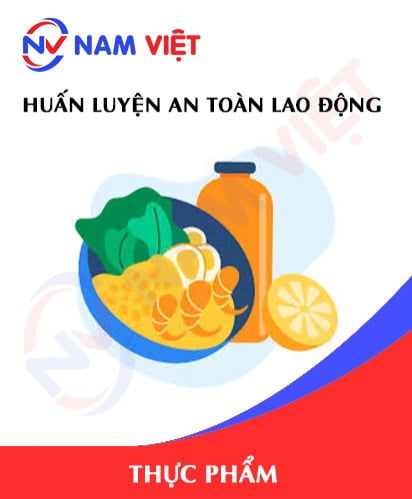
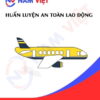
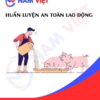



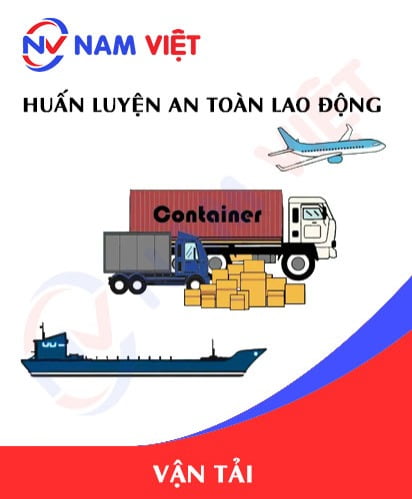
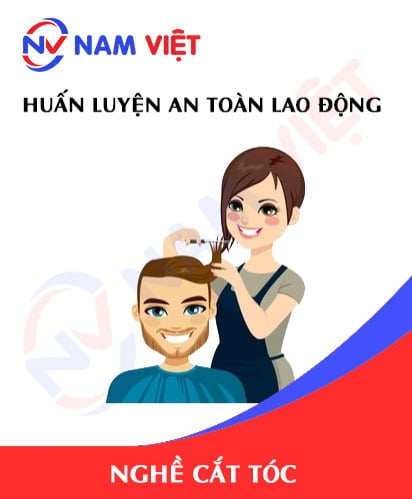
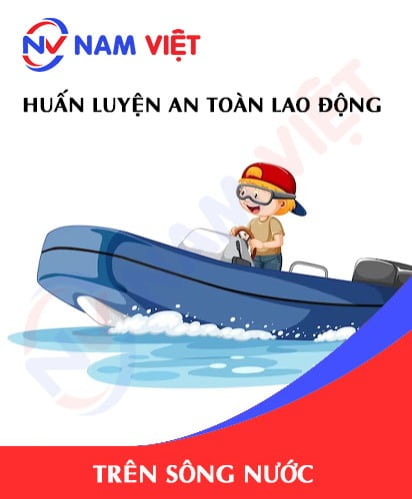
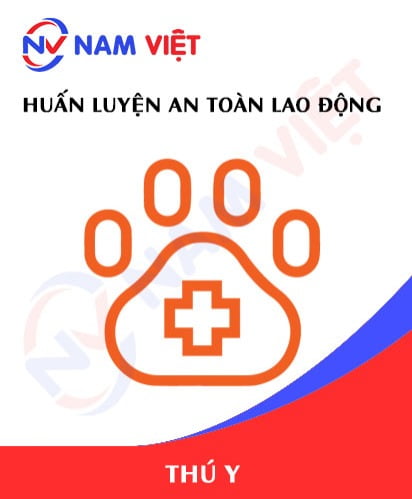
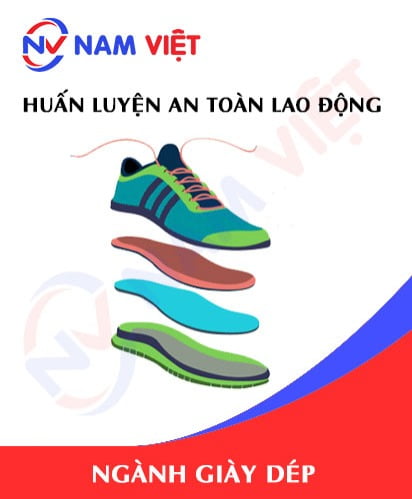
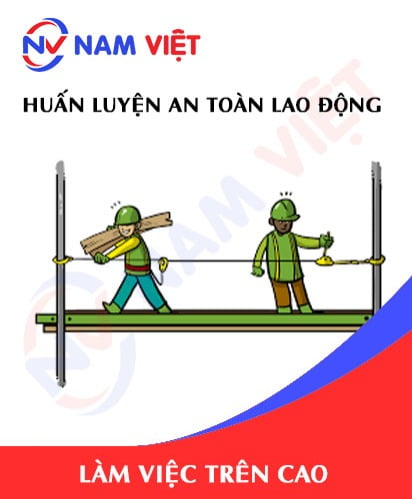

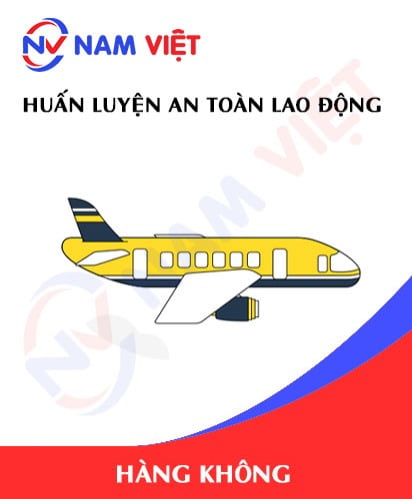
caotiensyhung.07081999
Dịch vụ huấn luyện an toàn lao động rất tốt nhé, giảng viên dạy rất sinh động dễ hiểu!